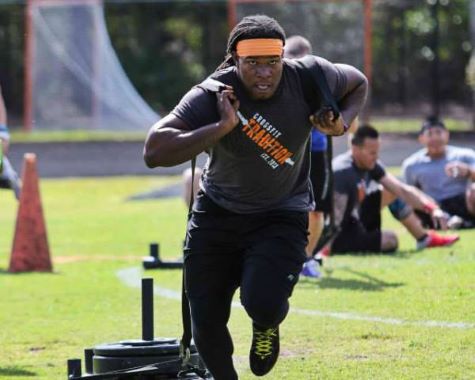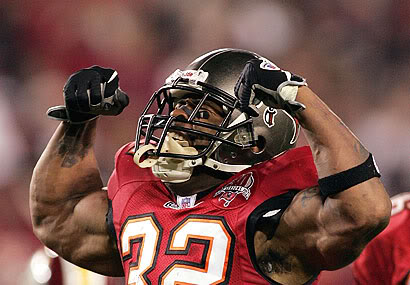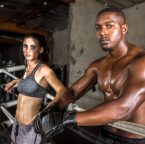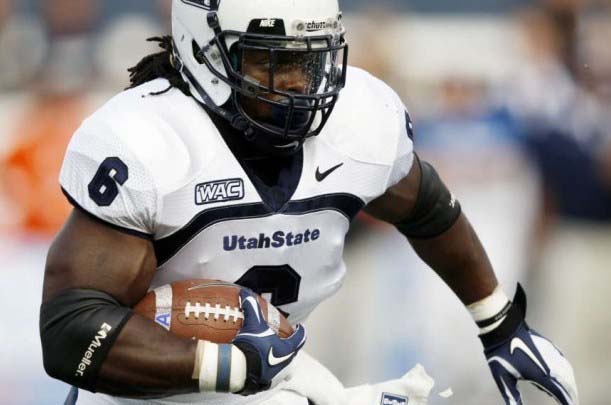Do you want a body that is lean, athletic and strong? Do you want to look like an athlete or be a better athlete?
Then this article is for you. Whether you want to look like a strong athlete or increase your athletic performance this article is for you,
We will cover all aspects of working out including strength training, cardio, building power, proper dieting and more.
So let’s get started…
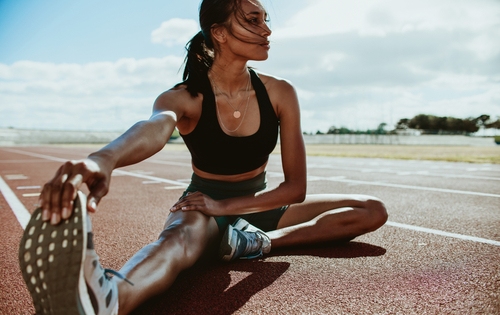
What is an Athletic Body?
I’m sure you have all seen an athlete on TV and wished you had a body like that, that might even be the exact reason you are reading this article.
An athletic body is a body that is lean, muscular and in great condition. You will have increased muscle mass, increased metabolic rate, better stamina for physical activities and improved performance in all sports.
Let’s be clear though, a bodybuilder body is not athletic. Think about it, is the biggest bodybuilder in the gym also the best athlete? Almost always the answer is no.
An athletic body is made to perform, not just look good. This body type is for those who want to do more than just workout.
Athletes need to be a combination of strong, fast, powerful, agile and well-conditioned. They need a body that performs.
This article will not only help you look like an athlete, it will also help you BE a better athlete.
Build Athletic Strength
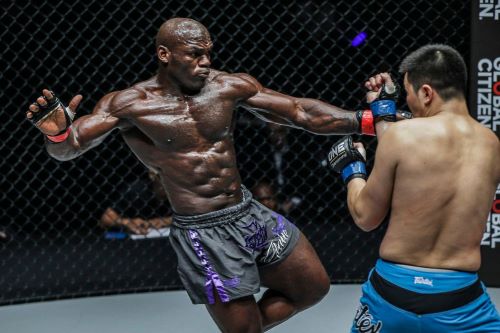
If you want an athletic body, you don’t just want to look athletic, you want to be athletic.
This means training your body like an athlete. We’re going to cover the most effective way of building up all aspects of your muscles and strength (which will result in a well-rounded athletic build) in the simplest and quickest way possible, so stick with it.
To build athletic muscle you will want to focus on compound exercises like squats, deadlifts, pull-ups, rows, and pushups.
If you are just starting out I would recommend focusing on 3 sets of 5-10 reps for each exercise. Once you get more advanced feel free to increase the number of sets.
You should train each muscle group twice a week with at least one day of rest in between.
As an athlete, you will want to mix in days where you lift lighter weights quickly, meaning you do the reps as fast as possible, This is known as the dynamic effort method and it will help you get strong and explosive rather than strong and slow.
Another important thing to remember is that strength is built inside out so always make sure you have a strong core.
Get a stronger core by doing exercises like planks, bicycle crunches, hanging leg raises and ab wheel rollouts.
Athletic body strength exercises we like best include:
- Back Squats
- Bench Press
- Pull-ups
- Plank variations
- Trap Bar Deadlifts
- Rows
- Cleans
- Bulgarian Split Squats
- Romanian Deadlifts
Later in this article, we will give you a training split that you can follow and use to build your athletic body.
Build Explosive Power
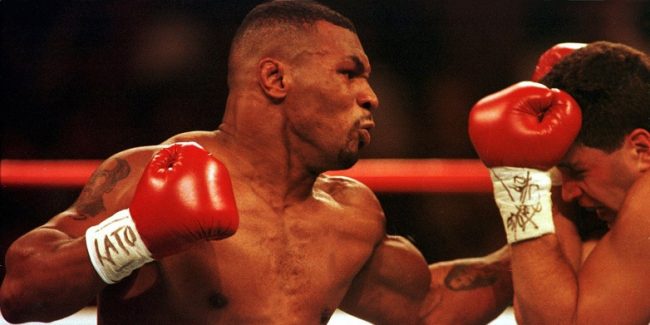
Being a strong athlete will help when it comes to all sports, but being explosive is what will separate you from the rest,
A great way to build explosive power is to use plyometrics, another good way is through med ball throws. Let’s talk about each.
Ploymetrics
Plyometrics, or jump work, is an excellent method of developing explosive power for athletes. However, it must be done in the right way to achieve the greatest results. Here’s how…
Plyometrics can help you to make big strides in your game by improving your speed and quickness – two valuable assets for just about any type of athlete. Here’s how to get the most from this valuable training method…
Plyometric exercises are ballistic in nature and produce an eccentric muscular action followed by a concentric muscular contraction. In simpler terms, that means you put a lot of force into something, then explode into it. The plyometric effect is provided entirely by your muscles – there’s no help from gravity.
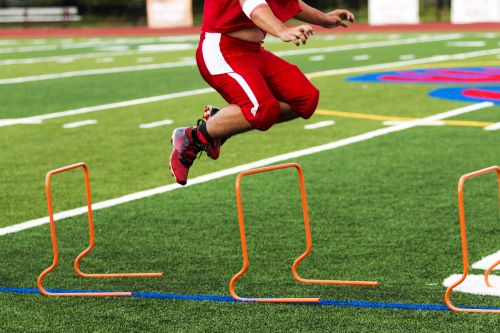
In theory, this process should lead to greater explosive power and increased speed over time. That means more jumping ability, a quicker first step out on the court or field, and improved performance all around. Of course, it can’t work miracles but if you’re looking for ways to gain an edge on your competition, explosive power training might just be the answer you’ve been looking for…
Some of the best plyometrics exercises include:
- Box Jumps
- Lateral Jumps
- Plyo Lunges
- Depth Jumps
- Broad Jumps
For a more in-depth look, check out our article The 12 Best Plyometrics Exercises for Athletes.
Med Ball Throws
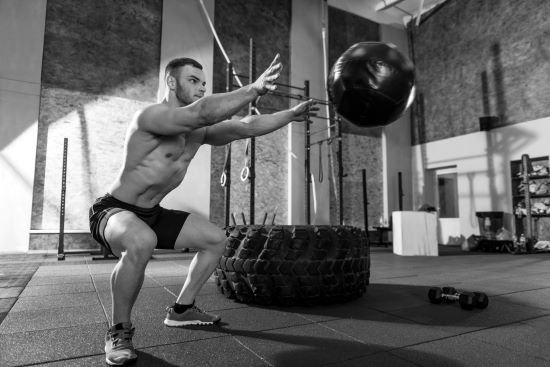
If you’re an athlete, no doubt you’ve heard of med ball throws and slams. If you’re not familiar with the term, it’s pretty much exactly what it sounds like: throwing a medicine ball against or into a wall or other object or slamming it to the ground. There are all sorts of variations – over-head throws, rotation throws, overhead slams/throws, chest passes, etc.
All types of med ball throws will improve explosiveness and power (which is crucial in most sports). Athletes commonly use them as part of their strength and conditioning program to gain those attributes. However, there is one big mistake that many athletes (and thus many trainers) make when prescribing or performing med ball slams and throws: most people perform the exercises too slowly.
The key to these types of explosive movements is speed. Allowing yourself to move quickly and with force will produce greater results than moving with a slow and calculated tempo. Doing so does not mean sacrificing form for speed, however – great form is very important, especially in sports where you’re required to repeat motions over and over again.
When to Perform Med Ball Throws/Slams?
While they can be used anywhere from pre-workout (e.g., getting an athlete fired up), during your warm-up, or as part of your cool down, med ball throws are typically best used at the beginning of your workout, before you tire yourself out with other exercises.
Some of our favorite meb ball throws for building explosive power include:
- Med Ball Slams
- Overhead bomb tosses
- Med ball chest pass
- Kneeling tosses
- Shot put throw
See our article The 7 Best med Ball Tosses for Explosive Power for more details on med ball throws.
Build Speed
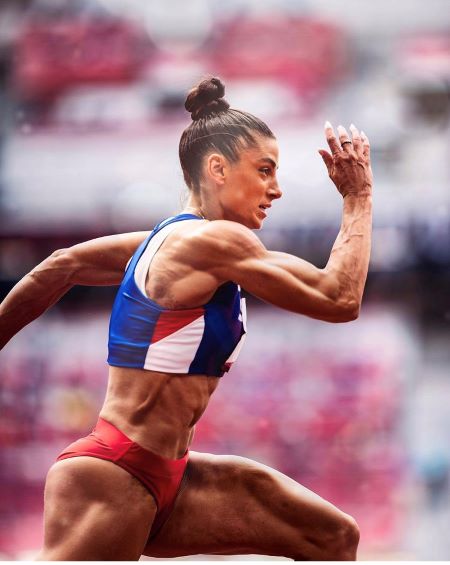
Have you ever heard the expression “speed kills”?
It’s true when it comes to sports, and being slow can really hurt your athletic performance.
Don’t be a slowpoke, here are ways to increase your acceleration and sprint speed.
Lose Weight
This one isn’t rocket science but it needs to be said. The less weight you have to move the easier it is to move it.
Don’t believe me? Go run a 100-meter sprint, then go back and do it again in 2 days with a 10 lb weight strapped to your back and tell me which one was faster.
If you have extra weight to lose then doing so can help. Not only will losing extra weight help you run faster but you will also look better and more athletic. If you don’t have extra weight to lose then don’t try and lose weight. You will likely just lose muscle and end up being slower. And it’s just flat out unhealthy.
Related: Best Workout for an Athletic Body and Performance According to AI
Perform Sled Pulls for Acceleration
Sled pulls won’t give you faster high-end speed but they will give you faster acceleration which is vital to athletes.
In our article Heavy vs Light Sled Pulls for Sprint Acceleration we go into great detail about this subject but we can summarize it here for you.
You should perform sled pulls with weights between 25-75% of your body weight, any more weight than that and won’t get the benefits
Perform 5 sets of 15-yard sled sprint pulls and make sure you get plenty of rest between sets even though you won’t feel tired.
Do Your Sprints
Sprinting is one of the best things you can do to get an athletic body and improve athletic performance.
And guess what, the chances of you getting faster and better at sprints without actually running sprints is pretty slim.
Running sprints also potentiates the CNS. This means that it gets the central nervous system fired up and research has found that if you do the sprinting before you lift it can spark new muscle gains through this post-activation potentiation.
Sprints are also great for building the hamstring and glutes and they burn tons of fat.
And let’s be honest, sprinting is one of the best exercises you can do for an athletic body…if you haven’t noticed, all sprinters have very athletic builds.
I could go on but you didn’t come here to become a track athlete, the above advice on speed and acceleration should be more than enough.
Related: 8 Reasons You Must Sprint for Your Physique
Increase Your Endurance
Don’t be one of those people who looks like they are in great shape but then they get invited to a pickup game with their friends and keep up because they skipped the cardio. Please, don’t embarrass yourself like that.
You want a body that shows and goes, to get that you need to improve your cardio.
You don’t need to be able to run a marathon, but I would say you need at least be able to run a 5k. Any athlete who is worth their salt can run a 5k.
Want to run long distances faster? Try some Fartlek training.
Fartlek training is when you mix up your running speeds in intervals. This is great for building cardiovascular endurance.
For example, if you are doing a 30-minute jog, run at a fast pace for 1 min, then slow it down to a recovery pace the next min and repeat this process over and over again.
You can also try some tempo runs which are basically long slower runs. You can do tempo runs on any distance really but I would recommend running at least 15 minutes on a track or on the treadmill for this one.
You don’t just have to do running though, you can also do shuttle runs, bike riding, swimming or jump roping. Anything that gets your heart rate up will help build endurance.
Get More Agile
Agility is the ability to move quickly. It requires your body’s muscle strength, balance and reflexes work together in harmony as you sprint or jump over obstacles while staying on course with what’s ahead of you–whether it be left right up down at an angle!
You don’t need to do agility drills all the time but including them into your workouts will help improve your foot speed and coordination which will, in turn, make you more agile. Some of the most basic and best agility drills include:
- Tire jumps – find a big tire and jump over it.
- Hurdles – place two cones about four feet apart. Jump over them.
- Cone slalom – at cone one, shuffle to cone two, then to three etc.
- Dwarf hurdles – place two cones about four feet apart. Jump over them while staying in a low squat position.
Related: 3 Workouts to Improve Agility
The Athlete Diet

Athletes need more than just a standard balanced diet, we should be eating for our sport and the type of sport we participate in.
Every sport has its own unique demands and thus requires energy from different sources and at differing times during and after exercise. For example, an (assumed) endurance athlete like a runner means they should be fueling their body with complex carbohydrates such as whole grains or fruit after workouts because those will provide sustained energy which will help them continue running far into the future without crashing!
On the other hand, an (assumed) power athlete like a sprinter should be getting protein within 30 minutes of completing their workouts because this will allow them to recover from the exertion and build lean muscle mass.
When you eat will depend on what type of training you’ve done, your body type and your personal preferences whether it be a fast or slow metabolism. Also, consider factors such as where you are in your menstrual cycle to make sure you aren’t crashing from eating too many carbs before a workout.
The three main macronutrients for athletes are protein, carbs and fat and each one should be eaten at different times throughout the day depending on what kind of athlete they are:
Endurance athletes need complex carbohydrates that break down slowly into glucose which is then burned by mitochondria for energy instead of glycogen which is stored in muscle cells and liver cells. This will keep them going for hours without crashing! The best time to eat these carbs is within an hour of completing their workouts so that they can be sent straight to the muscles which are craving glycogen, but if not possible then try having a meal or snack with complex carbs 1-3 hours before your workout.
Power athletes need protein to build lean muscle mass and the best time to eat this is within 30 minutes of completing a workout. If you can’t get it in so quickly, try having a high-protein snack 2-3 hours before your workout if possible.
Endurance athletes don’t really need fat unless they’re trying to lose weight or maintain their current weight/ body composition because it will only slow down your metabolism unnecessarily and make you feel sluggish.
Protein for Athletes
Power athletes need protein to build muscle mass and recover from intense training regimens, especially after workouts. They should have lean proteins such as egg whites or turkey breast immediately after finishing their workouts because that’s when muscle cells are most receptive to glucose intake; blood flow is at its highest and you’ve just finished exercising! If not possible then go for a high-protein meal or snack.
Endurance athletes don’t really need fat unless they’re trying to lose weight or maintain their current weight/ body composition. If you are an endurance athlete who is trying to lose weight then try having healthy unsaturated fats like avocado, nuts or olive oil in moderation throughout the day. However if you are doing strenuous exercise on a daily basis for hours at a time, your body will burn through its glycogen anyway so it doesn’t actually need these fats.
Related: The Big 10: Ten Nutrition Rules for Athletes
Carbohydrates for Athletes
Power athletes need carbohydrates because, without them, their bodies wouldn’t be able to endure high-intensity training sessions and would fatigue quickly. The best type of carbs for this purpose are simple sugars such as honey, syrups and fruits which will provide a quick burst of energy. The best time to eat these is within 30 minutes of completing your workout since the glucose from these carbs will immediately be sent to the muscles that need it most. Also, consider having a pre-workout snack with complex carbohydrates about an hour before if you prefer a slow release of energy or need something before going for a run.
Endurance athletes need complex carbohydrates such as whole grains, vegetables and fruits because they break down slowly into glucose rather than glycogen, unlike simple sugars which get burned quickly through mitochondria without being stored in your muscles. Eating these things 1-3 hours after finishing your workouts before bedtime is perfect because this will avoid an energy crash before you go to bed and will be released throughout the night. If not possible then try having a snack with complex carbs about an hour before your workout if possible.
Fat for Athletes
Power athletes don’t really need fat unless they’re trying to lose weight or maintain their current body composition because otherwise their metabolisms would be slowed down unnecessarily. If this is the case, healthy unsaturated fats like avocado, nuts and olive oil are ideal for this purpose because they’re low in calories but can still provide lots of nutrients.
However, if you are doing strenuous exercise on a daily basis for hours at a time then try having them 1-3 hours before your workout so that your body doesn’t burn through its glycogen stores; it will actually turn to these fats for fuel.
Endurance athletes also don’t really need fat unless they’re trying to lose weight or maintain their current body composition because otherwise having too much fat in your diet can slow down digestion and make you feel sluggish. If this is the case, try having healthy unsaturated fats like avocado, nuts and olive oil in moderation throughout the day.
However, if you are doing strenuous exercise on a daily basis for hours at a time then consider having them 1-3 hours before your workout so that your body doesn’t burn through its glycogen stores which will actually turn to these fats for fuel.
Fluids for Athletes
Power athletes need to drink lots of fluids because the more powerful their muscles are, the more sweat is produced as a by-product. This becomes especially important during long workouts where you’re breaking through your anaerobic threshold which means that you’ll be producing lactic acid faster than your body can break down. It’s best to drink fluids before, during and after these workouts to replenish the water lost through the lactic acid.
Endurance athletes also need to drink lots of fluids because without them their bodies would fatigue more quickly and they’d be more prone to injury. For this reason, it’s important to drink fluids before, during and after these longer workouts to keep muscles from cramping up.
The Best Supplements for Athletes
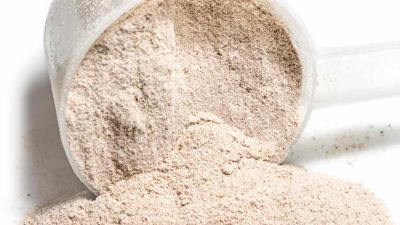
When it comes to athletes, there are really only 3 supplements worth considering.
These 3 are:
Creatine
Creatine is a great supplement to take if you’re trying to build muscle because it can help your muscles retain water which means that they’ll stay hydrated for longer periods of time. It’s also been shown in studies to increase workout performance by providing more energy via ATP which means that you’ll have more energy in your muscles when doing power-based workouts.
Power athletes can benefit from creatine because it will give their muscles a lot of extra water which will help them to retain their strength and performance level for longer periods of time. This, along with the added energy they get from ATP means that they’ll be able to go longer and harder during their workouts.
Endurance athletes can benefit from creatine because it will provide them with added water in their muscles which means that they’ll have more endurance when doing long, power-based workouts like marathons or triathlons. This, along with the extra energy they get from ATP means that they’ll be able to keep going at their best for longer periods of time.
I personally have had great success with creatine and it is my go-to supplement. It has helped me make undeniable gains in strength as well as muscular endurance and recovery. If you only choose 1 supplement it should definitely be creatine.
*I should also note that creatine does not work for everyone, creatine does not work for about 30% of the population. Very unfortunate for them.
Protein Supplements
Protein is a great supplement to take if you’re trying to build muscle because it contains amino acids which are the building blocks of muscles. Your body can use these amino acids to recover from strenuous workouts but only if there’s enough healthy protein in your diet. If there isn’t, then your body will start using its own muscles as the new building blocks which will make it more difficult for you to gain muscle.
Power athletes can benefit from protein because they need healthy proteins in order to help their muscles recover after strenuous workouts which will allow them to gain new muscle tissue. This, along with some creatine, can be a very useful combination if your goal is to gain as much lean muscle as possible.
·Endurance athletes can benefit from protein because they need healthy proteins in order to help their muscles recover after strenuous workouts which will allow them to continue to train at peak performance levels. This, along with some creatine, can be a very useful combination if your goal is to increase muscular endurance.
Creatine & Protein Work Together
Creatine and protein can actually work together to provide your muscles with a lot of benefits. Studies have shown that taking creatine and protein supplements together has been shown to increase muscle mass by as much as 10% compared to those who didn’t take any at all (1). There’s also evidence that taking creatine and protein can help to increase your lean muscle mass by 6-7% compared to the placebo (2).
Pre-Workout Supplements
A pre-workout supplement can provide a lot of benefits to those who are involved in strenuous workouts. These supplements contain ingredients such as caffeine and citrulline malate which have been shown to increase your energy levels so that you can train harder for longer periods of time. In fact, studies have shown that these two ingredients combined can increase your endurance by as much as 17% (3) which is the equivalent to running 2.8 extra miles!
Power athletes can benefit from pre-workout supplements because it will give them the energy they need to perform strenuous workouts for longer periods of time so that they gain more lean muscle mass and increased endurance.
Endurance athletes can benefit from pre-workout supplements because it will give them the energy they need to perform strenuous workouts for longer periods of time so that they can continue to train at peak performance levels for longer periods of time. By combining creatine with a pre-workout supplement, you’ll be able to continue to train as hard as you want for as long as you want, allowing your muscles to continue to grow and gain endurance at a faster rate.
That being said, many pre-workouts use too a lot of stimulants and it may be a bit much for some people, including me. Luckily there are some good stimulant-free pre-workout supplements out there that can give you the benefits without the side effects.
Athletes Need Rest

I get it, you want to train like a beast and go all out every single day. I felt the same way, but then I realized that there’s nothing to be gained from this. I now spend about 4-5 days a week in the gym and take one day off completely. I’ll come in to the gym for some light cardio on my day off. For me, this is an ideal schedule because it allows me to work out intensely when I’m motivated to do so, but gives me time necessary to recover properly.
If you don’t allow your body time to recover, it will never grow and get stronger. Lifting is basically tearing your muscles apart when you lift weights, which means it requires time to rebuild itself. If you’re in the gym every day, then your body is never given. Your muscles need time to repair themselves after you’ve trained them hard, and if you don’t let them they’ll never get any bigger. If your body is always sore, tired, or worn down, then chances are that it’s not healing itself like it’s supposed to. You’ll either be discouraged because you’re unable to make progress physically, or you’ll get injured trying to push yourself too far.
The other key to letting your body recover is sleep. If you’re not getting at least 8 hours of good sleep every night, then there’s no way that your body will be able to rebuild itself, meaning that if you want your muscles to recover, then it starts with getting a good night’s sleep.
The same thing goes for your mental well-being. If you’re constantly tired, stressed out and in a crummy mood because of things going on in your life outside the gym, then chances are that it’s affecting how much effort you put into your workout routine. You’ll be discouraged easily if you’re constantly feeling down, and it’s going to be harder for you to keep up your motivation. This won’t matter much if all you want is to lose weight or stay in shape, but if you want bigger muscles then having a healthy mind can help too.
The Athlete Workout
The following workout is designed specifically to make you a better athlete and give you an athletic body.
Of course, if you are in a specific sport you should look for something more sport-specific, this workout will help overall though.
Monday:
- Sprints 5×50 yards
- Med Ball Slams 3×10
- Overhead Med Ball Toss 3×10
- Bench Press: 3×6
- Pull-Ups: 3 sets of max reps
- Sled Pulls 5×20 yard sprints
Tuesday:
- Lateral Jumps: 2 to 3 sets of 6 to 10 repetitions
- Plyo Lunges: 2-3 x 4-10
- Trap Bar Deadlift 3×6
- Bulgarian Split Squats 3×10
- Rotational Landmine Press 3×10
- Plank 3×40 seconds
Wednesday:
Run 2-3 miles
Thursday:
- Lateral Med Ball Throws 3×8 per side
- Med Ball Chest Pass 3×10
- Incline Dumbbell Press: 3×6-10
- Chin-ups 3 sets of max reps
- Renegade Rows 3×10
- Heavy Sled Pulls 5×15 yard Sprint
Friday
- Band Resisted Broad Jumps 3×8
- Band Resisted Lateral Jump 3×8
- Trap Bar Deadlift 3×10
- Single-Leg Romanian Deadlift
- Goblet Squats 3×12
- Seated Dead Bugs 3×15
Saturday
- Conditioning – Do cardio of your choice 20-30 mins
Sunday
- Off
Let’s Wrap This Thing Up
Finally, it’s time to take action. What are you waiting for?
There is no better time than now to start achieving your fitness goals and getting the athletic body and performance that you deserve. Put this article down and get moving! It’s really not that hard when you know what works best for your personal habits, needs, and lifestyle.
All of these tips can help make sure you’re on track; but in the end it all comes down to YOU- so find out which one or two work best for YOU (and then put them into practice) because there is only one person who will be accountable at the end of the day if things don’t go as planned -YOURSELF!

Ryan is a former college wrestler and lifelong fitness fanatic. He has run half marathons, done mud runs, placed in body transformation contests, coached wrestling, and now coaches girls’ soccer. Not to mention he has also tried literally hundreds of supplements over the years and has a vast and thorough supplement knowledge. He has written for Muscle & Strength, Testosterone Junkie, The Sport Review and other publications. He is also the editor-in-chief of this website and has over 25 years of experience in the fitness industry. Feel free to connect with him on his LinkedIn page below.

